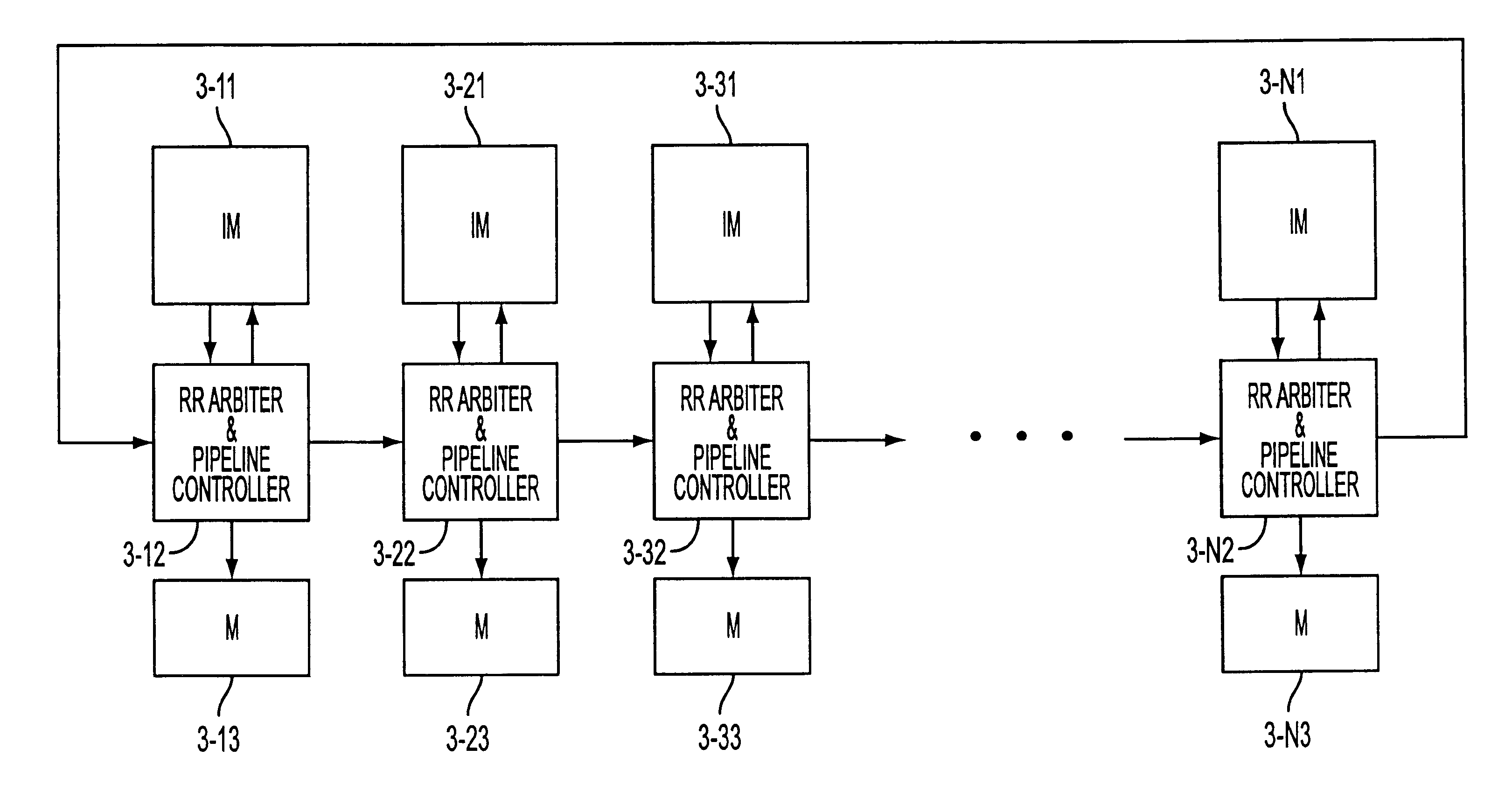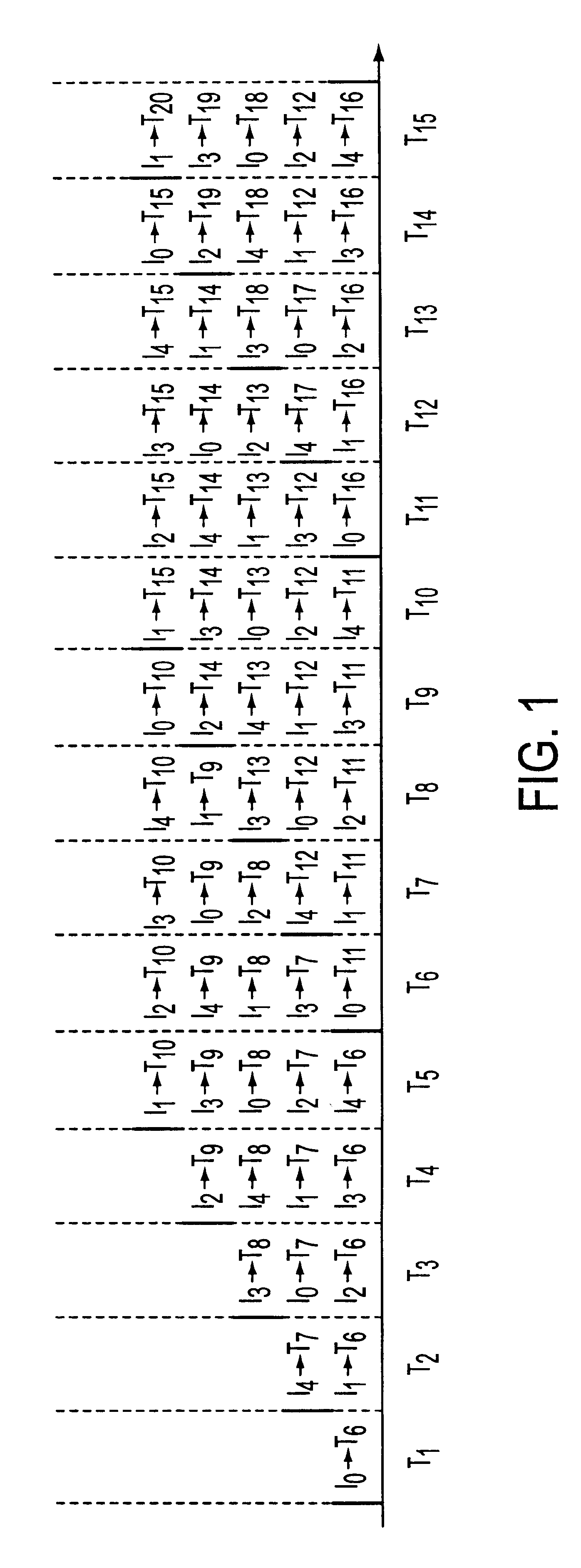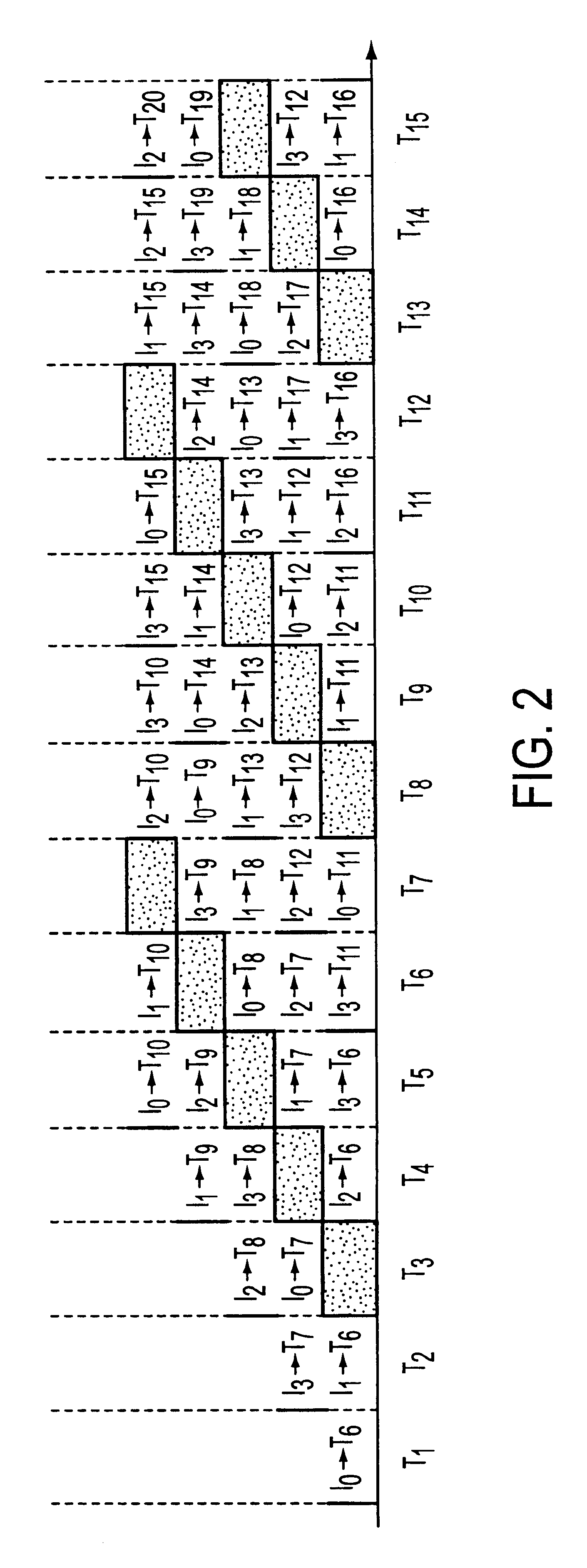RRGS-round-robin greedy scheduling for input/output terabit switches
a terabit switch and scheduling algorithm technology, applied in data switching networks, time-division multiplexing selection, multiplex communication, etc., can solve the problems of high complexity of optical knockout switching, performance may degrade, request/acknowledgement scheduling cannot be processed within one time slot, etc., to achieve efficient use of optical cores and good performan
- Summary
- Abstract
- Description
- Claims
- Application Information
AI Technical Summary
Benefits of technology
Problems solved by technology
Method used
Image
Examples
Embodiment Construction
IA. Field of the Invention
This invention relates to terrabit switches for use in applications like electronic and optical media. Specifically, this invention relates to a round robin greedy scheduling algorithm. This invention is embodied in methods for scheduling and a terrabit switching system that implements the round robin greedy scheduling algorithm.
IB. Background of the Invention
With the growing demand for bandwidth there is an increasing need for terabit switching. see M. Beshai, and E. Miinter, "Multi-tera-bit / s switch based on burst transfer and independent shared buffers," ICC'95, pp. 1724-1730, N. McKeown et al., "The tiny tera: a packet switch core," IEEE Micro, vol. 171, January-February 1997, pp. 26-33, and W. D. Zhong, Y. Shimazu, M. Tsukuda, and K. Yukimatsu, "A modular Tbit / s TDM-WDM photonic ATM switch using optical buffers," IEICE Transactions on Communications, vol. E77-B, no. 2, February 1994, pp. 190-196. Optical switching core (which can be viewed as a logical...
PUM
 Login to View More
Login to View More Abstract
Description
Claims
Application Information
 Login to View More
Login to View More - R&D
- Intellectual Property
- Life Sciences
- Materials
- Tech Scout
- Unparalleled Data Quality
- Higher Quality Content
- 60% Fewer Hallucinations
Browse by: Latest US Patents, China's latest patents, Technical Efficacy Thesaurus, Application Domain, Technology Topic, Popular Technical Reports.
© 2025 PatSnap. All rights reserved.Legal|Privacy policy|Modern Slavery Act Transparency Statement|Sitemap|About US| Contact US: help@patsnap.com



